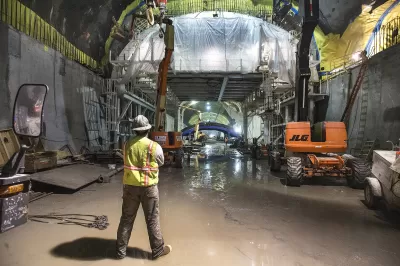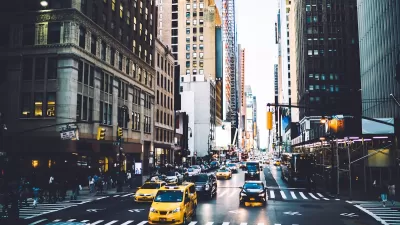Charles Marohn responds to Noah Smith's article asking why American Infrastructure is so expensive and delivers a plan to attack the problem.

American infrastructure incentives are badly misaligned, according to an article by Noah Smith, published in May for Bloomberg.
Following up on that story for Strong Towns, Charles Marohn argues that until we fix the incentives for infrastructure, "throwing more money at this system is simply pouring good money after bad." Marohn starts with the example of a policy that provides federal funding based on lane miles of highways, and programs that pay for around 90 percent of new construction but only 50 percent of maintenance. Marohn reasons that these incentives don't push projects to be well-managed and cost-efficient, nor built with the goal to endure.
To fix these types of misalignments, Marohn outlines a plan in four parts. He argues that localities should be given tools and encouraged to raise their own funding for these projects, so that they will be incentivized not to impress federal services whose rules and mandates have to be made broad enough to serve the whole country but, instead, built to serve their own local needs.
To reward planning for the long-term, Marohn says, "[t]he only tool I would take off the table -- or at least constrain -- is debt. Cities should have the ability to take on cash flow take and make strategic investments with debt, but they should not be able to live beyond their means today -- intentionally or not -- at the expense of future generations." He goes on to suggest that funding should be tied to very specific initiatives, like a toll or sales tax to pay for specific maintenance. Lastly, he suggests tying the design, construction, and warranty for projects into a single contract so contractors are motivated to create lasting success instead of just passing the buck.
FULL STORY: THIS IS WHY INFRASTRUCTURE IS SO EXPENSIVE

Planetizen Federal Action Tracker
A weekly monitor of how Trump’s orders and actions are impacting planners and planning in America.

Congressman Proposes Bill to Rename DC Metro “Trump Train”
The Make Autorail Great Again Act would withhold federal funding to the system until the Washington Metropolitan Area Transit Authority (WMATA), rebrands as the Washington Metropolitan Authority for Greater Access (WMAGA).

The Simple Legislative Tool Transforming Vacant Downtowns
In California, Michigan and Georgia, an easy win is bringing dollars — and delight — back to city centers.

The States Losing Rural Delivery Rooms at an Alarming Pace
In some states, as few as 9% of rural hospitals still deliver babies. As a result, rising pre-term births, no adequate pre-term care and "harrowing" close calls are a growing reality.

The Small South Asian Republic Going all in on EVs
Thanks to one simple policy change less than five years ago, 65% of new cars in this Himalayan country are now electric.

DC Backpedals on Bike Lane Protection, Swaps Barriers for Paint
Citing aesthetic concerns, the city is removing the concrete barriers and flexposts that once separated Arizona Avenue cyclists from motor vehicles.
Urban Design for Planners 1: Software Tools
This six-course series explores essential urban design concepts using open source software and equips planners with the tools they need to participate fully in the urban design process.
Planning for Universal Design
Learn the tools for implementing Universal Design in planning regulations.
Smith Gee Studio
City of Charlotte
City of Camden Redevelopment Agency
City of Astoria
Transportation Research & Education Center (TREC) at Portland State University
US High Speed Rail Association
City of Camden Redevelopment Agency
Municipality of Princeton (NJ)





























